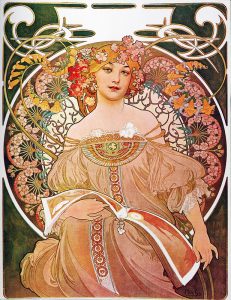Harnessing Urban Chaos and Classical Serenity
From the urban sprawls of Washington, D.C., James Bullough draws the raw, unrefined energy that infuses his monumental works, both in expansive murals and intimate studio paintings. Living and working in Berlin, Germany, the artist merges the immediacy of street art with the meticulousness of classical painting, a juxtaposition that defines his unique style. Growing up amid the vivid urban graffiti of his hometown, Bullough absorbed its vibrant intensity, which later became a cornerstone of his artistic journey. This early influence is palpable as he blends traditional oil painting techniques, self-taught through the study of the Old Masters, with the spirited dynamism of street art.
Bullough’s art is not just a merging of styles but also of scales and mediums. Whether he is working with spray paint on the vast canvases of city walls or with oils in the quieter confines of his studio, his work consistently balances finely rendered portraiture against stark, graphic abstractions. This balance is not merely visual but emotional, bridging the raw and the refined, the chaotic and the serene. Each piece is a staged contradiction, inviting viewers to explore the depths of both the human condition and artistic expression. By positioning traditional realism against modern distortions, Bullough invites a dialogue between the past and the present, making his work a compelling narrative of contrasting worlds.
James Bullough: A Global Canvas
A prolific contributor to the global art scene, James Bullough’s murals punctuate landscapes across continents, from the vibrant alleys of New Zealand to the historic walls of Sweden and France. His participation in major art projects like URBAN NATION’s Wynwood Walls and Unity, as well as prominent festivals such as Lollapalooza, has solidified his reputation as a transformative figure in both the street art and fine art communities. His ability to adapt his vision to both large-scale public installations and intimate gallery settings speaks to his versatility and commitment to his craft.
Beyond the aesthetics, Bullough’s work is a fixture in the international art market, with numerous sold-out solo exhibitions to his name. Collectors and art enthusiasts around the world clamor for his pieces, drawn not only to their visual impact but also to their underlying narratives. His art is a testament to the power of modern visual storytelling, where every slice, shift, and abstracted segment challenges our perceptions of reality. Through his innovative use of negative space and fragmented forms, Bullough explores themes of identity, perception, and human experience, making his work resonate on a deeply personal level with audiences worldwide. As his murals adorn cityscapes and his paintings hang in private collections, Bullough continues to push the boundaries of what art can communicate and how it can transform the spaces it inhabits.
Exploring the Altered Realities
James Bullough’s thematic exploration of ‘altered reality’ is central to his artistic narrative, serving as a creative lens through which he reimagines the everyday. This theme is evident in how he deconstructs his subjects, using slices and shifting segments to distort and redefine their form. By playing with the structural integrity of figures and scenes, Bullough delves into the way we perceive the world around us, making his works not just visual experiences but also mental exercises in viewing. His approach allows the audience to engage with art on a level that transcends mere observation, encouraging a dynamic interaction between the viewer’s perception and the artwork itself.
This engagement is further enriched by Bullough’s nuanced handling of body image and gender perceptions, themes he subtly weaves through the visual narratives of his pieces. While he prefers to leave overt discussions of these themes to the interpretation of the viewer, they are nonetheless integral to the layered meanings within his work. Each piece serves as a canvas for personal and societal reflection, prompting viewers to question and reinterpret their own views and biases. Through this, Bullough not only alters realities on the canvas but also influences the realities of those who engage with his art, showcasing the transformative power of modern visual art.
Inspirations and Aspirations: The Artistic Journey of James Bullough
Innovation and evolution are the cornerstones of James Bullough’s creative process, inspired by the relentless pursuit of growth he observes in his contemporaries. Artists like Dan Witz, Erik Jones, and Conor Harrington play pivotal roles in inspiring Bullough, as they continuously push the boundaries of artistic expression and cultural impact. This drive to evolve is mirrored in Bullough’s own approach to his work, where the process of creation is as significant as the finished product. His relentless refinement and redefinition of his artistic methods are part of a broader dialogue with the global art community, contributing to the ever-advancing narrative of contemporary art.
Moreover, Bullough’s journey is marked not just by his artistic endeavors but also by his personal sacrifices and the bold life choices he has made. His decision to leave a stable teaching career in the United States to pursue painting full-time in Berlin epitomizes the risks that often accompany the pursuit of artistic authenticity. This leap into the uncertain has not only shaped his career but has also imbued his work with a sense of adventure and exploration, qualities that resonate deeply with his audience. Through his art and his life, James Bullough embodies the spirit of continuous evolution and the relentless pursuit of one’s passions, inspiring both artists and art lovers to pursue their own paths with equal fervor and commitment.




